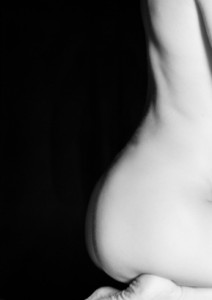Is Cellulite Treatable? What Is It, Why Do I Have It, and Can I Beat It?
By Anthony Heredia | December 6th, 2010 | Category: Fitness Couture, Health | 3 comments Cellulite has plagued the aesthetically conscious woman since Adam first asked Eve, “What is that dimpling in the back of your thighs?” Well, maybe not that long, but long enough. The term cellulite is not an object but a description for the dimpling appearance that fat cells cause. The term first appeared in the 1920s and was first used in an English publication by Vogue Magazine in April of 1968. It then quickly traveled across the Atlantic Ocean as a means for us to describe this fatty nuisance. Cellulite is simply patches of enlarged fat cells pushing up on a web of weak fibrous connective tissue, creating a dimpling effect on the skin’s surface; the thinner the skin the more dramatic the dimpling. 80%-90% of all post pubertal women have some signs of cellulite. It is predominantly a female issue due to the fact that female tissue’s bands are designed in vertical columns, as opposed to males who have bands designed in a crisscross pattern like a web. Imagine pushing a heavily filled water balloon against a tennis racket face. The balloon will poke through a bit, but not too much (male scenario). Now, picture the water balloon being pushed through a tennis racket with only vertical strings. How bad the cellulite appears will be contingent on how filled the water balloon is and how much space exists between the vertical strings on the tennis racket.
Cellulite has plagued the aesthetically conscious woman since Adam first asked Eve, “What is that dimpling in the back of your thighs?” Well, maybe not that long, but long enough. The term cellulite is not an object but a description for the dimpling appearance that fat cells cause. The term first appeared in the 1920s and was first used in an English publication by Vogue Magazine in April of 1968. It then quickly traveled across the Atlantic Ocean as a means for us to describe this fatty nuisance. Cellulite is simply patches of enlarged fat cells pushing up on a web of weak fibrous connective tissue, creating a dimpling effect on the skin’s surface; the thinner the skin the more dramatic the dimpling. 80%-90% of all post pubertal women have some signs of cellulite. It is predominantly a female issue due to the fact that female tissue’s bands are designed in vertical columns, as opposed to males who have bands designed in a crisscross pattern like a web. Imagine pushing a heavily filled water balloon against a tennis racket face. The balloon will poke through a bit, but not too much (male scenario). Now, picture the water balloon being pushed through a tennis racket with only vertical strings. How bad the cellulite appears will be contingent on how filled the water balloon is and how much space exists between the vertical strings on the tennis racket.
Women of all ages, sizes, and backgrounds deal with cellulite, so don’t think that women with larger bodies are the only ones who need to be concerned. Cellulite is found on just about every celebrity and model you can think of. They just have more resources to mask it before cameras can get that notorious dimpling bikini shot. In all actuality, the two female body types most prone to cellulite are overweight women and thin, underweight women who do not lead an active lifestyle. When I mention overweight, I am referring to an amount of weight that can stretch the skin and not just a few extra pounds; so please don’t starve yourself, as that will lead to the second cellulite-prone body type: skinny fat. The term skinny fat refers to a woman who has very low body weight but whose body consists of a high fat percentage. Being skinny fat is just as bad and sometimes worse as being overweight because nearly all the same consequences apply that would to being obese. The only difference is that no one is pushing you to change since your body appears to be normal. (More on skinny fat in “What Is Skinny Fat?” article) Thin women are prone to cellulite because of higher fat density combined with thinner skin.
The primary options for lessening or “treating” the appearance of cellulite lie in attempting to tighten loose connective tissue/skin, reducing the size or removing fat cells, causing slight inflammation to mask the appearance of dimpling, or attempting to smooth out the appearance with movement. Cellulite creams you know and love either cause micro inflammation in order to raise dimples in the skin temporarily to a smooth level, attempt to tighten skin, reduce water retention through diuretic ingredients, or boost fat cell reduction properties. In any and all of these cases, creams are still very temporary. Should you find something that gives you visible results you are happy with, you will always need to use it to maintain your results. Not all products are bad. They just aren’t cures or treatments. Consider them Band-Aids. I don’t mean to be the bad guy, telling you to surrender. I simply mean to educate you to protect you from wasting your hard-earned money on outlandish claims.
Many laser procedures and massage services exist that actually do help, but they are temporary and will need to be kept as part of your normal routine. Exercise is another common option. Although reducing the fat cell size and content of your body does help, it doesn’t fix the cause (being the loose elastin bands); so should you regress in your fitness, the dimpling will return. If exercise is the option you choose, it is important to stay on track to maintain your results.
Surgical procedures such as liposuction are actually not recommended for cellulite, as they will often make the appearance of cellulite worse because the fat cells weren’t the original problem; it was the loose connective tissue. Liposuction can create a deeper and far more irregular appearance since there would be no fat cells to hold the loose connective tissue in place at all.
The final option is laser and massage services which attempt to smooth out the area for more even distribution. It can also force the loosened connective tissues to contract temporarily or cause inflammation to puff up the valleys in the skin for temporary smoothness, like fluffing your pillow. Even lasers and powerful therapeutic massage cannot permanently treat cellulite. These options are not bad but merely need to be treated as part of a lifestyle routine and not cures. In actuality, the other vast benefits of a good massage and exercise will far surpass just helping your skin dimples. Medical professionals across the country agree that there is still no long-term consistent treatment for cellulite, as the only way to permanently fix the issue would involve reconstructing the tissue amidst the fat cells. Although there is no defined cure for cellulite, be sure to remember that you still have control of your beauty and health. No woman is subject to accepting her circumstances. Positive changes in a woman’s body and mind are possible regardless of her size, age, background, or financial status. Get to the gym, ladies, and tend to the temple that is your body, making sure to reward it at least twice a month with a massage. I guarantee that more than your skin dimples will benefit from the effort.









Anthony,
Thank you for this article. I’ve tried everything I knew to try. Expensive creams… I was even looking into liposuction hoping that would help. I’ll try the laser route. Keep you posted. Great article. Best, Sharlotte.
Your webpage is terrific.
[New Post] Is Cellulite Treatable? What Is It, Why Do I Have It, and Can I Beat It? – via #twitoaster http://www.agendamag.com/content/2010/12…